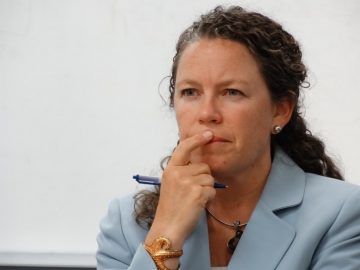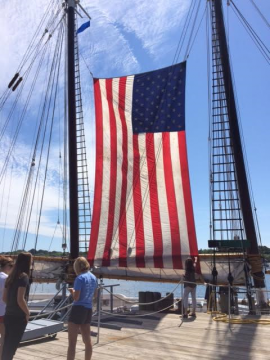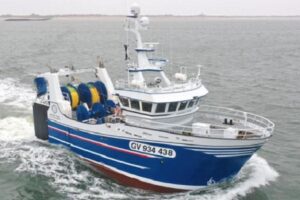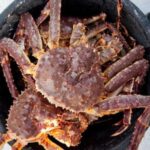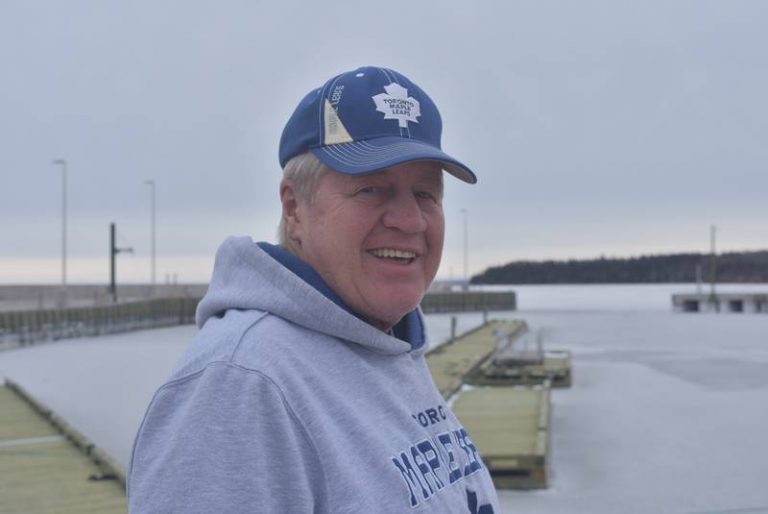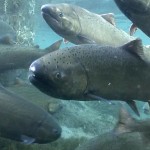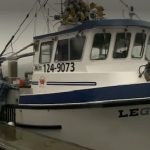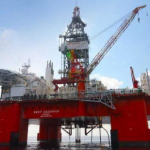Monthly Archives: June 2016
Fishermen condemn Labor candidate Lucy Stanton’s claims – Mark Jason Alexander, Commercial fisherman
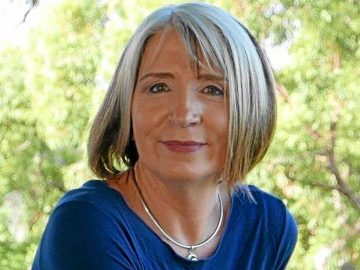 As commercial fishermen you expect some challenges, bad weather, fluctuating fish prices, bad seasons, but you do not expect to be falsely accused of a serious crime which has no basis and is totally untrue. We are concerned about the motives of Lucy Stanton given that she is a candidate for the Labor Party for the forthcoming election. As commercial fishermen we take pride in our product that we catch and get it to the market in the best possible condition. We also pay thousands of dollars in licence fees each year so as to keep operating. In addition to the licence fees we have an initial outlay of what can be in the hundreds of thousands of dollars. We are not about to risk our livelihood by doing something as stupid as firing weapons in a public place at night time as alleged. This is just totally untrue. Read the rest here 22:42
As commercial fishermen you expect some challenges, bad weather, fluctuating fish prices, bad seasons, but you do not expect to be falsely accused of a serious crime which has no basis and is totally untrue. We are concerned about the motives of Lucy Stanton given that she is a candidate for the Labor Party for the forthcoming election. As commercial fishermen we take pride in our product that we catch and get it to the market in the best possible condition. We also pay thousands of dollars in licence fees each year so as to keep operating. In addition to the licence fees we have an initial outlay of what can be in the hundreds of thousands of dollars. We are not about to risk our livelihood by doing something as stupid as firing weapons in a public place at night time as alleged. This is just totally untrue. Read the rest here 22:42
US Tuna Treaty survives, new deal for 2017 – Tunaboat Association comments on fishing pact
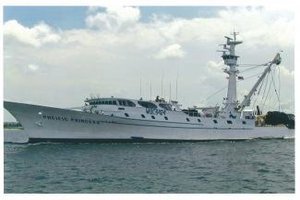 The US Tuna Treaty has survived after 18 negotiation meetings over the last seven years, with the latest one just concluded in Auckland, New Zealand. The multilateral Treaty is important for American Samoa because it allows US puirse seiners that supply our two canneries to fish in the exclusive economic zones of island countries that are close by. Read the rest here Tunaboat Association comments on fishing pact – The President of the American Tunaboat Association, Brian Hallman, says the fishing agreement reached over the weekend in Zealand between the United States and Pacific Island countries is from the point of view of the US fleet, the best outcome they could have achieved under difficult circumstances. Read the rest here Tri Marine looks to build coalition – Tri Marine International, which operates the Samoa Tuna Processors cannery in Atuu, says it has been anticipating a change in how the US purse seiners would manage access to the tuna fishing grounds in the Western and Central Pacific for several years. Chief Operating Officer of Tri Marine, Joe Hamby, says now that the future of the US South Pacific Tuna Treaty has been resolved, “we will be able to focus on building a coalition of fishing companies and resource owners committed to supporting American Samoa as a regional tuna processing hub.” Read the rest here 19:55
The US Tuna Treaty has survived after 18 negotiation meetings over the last seven years, with the latest one just concluded in Auckland, New Zealand. The multilateral Treaty is important for American Samoa because it allows US puirse seiners that supply our two canneries to fish in the exclusive economic zones of island countries that are close by. Read the rest here Tunaboat Association comments on fishing pact – The President of the American Tunaboat Association, Brian Hallman, says the fishing agreement reached over the weekend in Zealand between the United States and Pacific Island countries is from the point of view of the US fleet, the best outcome they could have achieved under difficult circumstances. Read the rest here Tri Marine looks to build coalition – Tri Marine International, which operates the Samoa Tuna Processors cannery in Atuu, says it has been anticipating a change in how the US purse seiners would manage access to the tuna fishing grounds in the Western and Central Pacific for several years. Chief Operating Officer of Tri Marine, Joe Hamby, says now that the future of the US South Pacific Tuna Treaty has been resolved, “we will be able to focus on building a coalition of fishing companies and resource owners committed to supporting American Samoa as a regional tuna processing hub.” Read the rest here 19:55
It happens! ‘Deadliest Catch’ Skipper Sean Dwyer busted for gear infraction
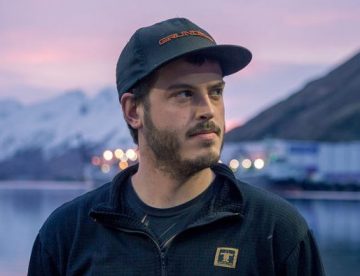 “Deadliest Catch” star Captain Sean Dwyer is in trouble with the law. Alaska’s Fish and Game officials fined Dwyer for some issues with his crab-catching equipment. The rules states that crab pots must have an 18-inch flap to allow the crab to escape, should it find its way back into the ocean. Dwyer’s crab pot only had a 15-inch flap, which has reportedly been fixed. The reality star reportedly paid $1,500 in fines and is now on probation for two years. Dwyer is the youngest captain of the Brenna A ship at 24 years old. It’s his first season with the hit Discovery series that has been airing for 12 seasons. Read the rest here 17:56
“Deadliest Catch” star Captain Sean Dwyer is in trouble with the law. Alaska’s Fish and Game officials fined Dwyer for some issues with his crab-catching equipment. The rules states that crab pots must have an 18-inch flap to allow the crab to escape, should it find its way back into the ocean. Dwyer’s crab pot only had a 15-inch flap, which has reportedly been fixed. The reality star reportedly paid $1,500 in fines and is now on probation for two years. Dwyer is the youngest captain of the Brenna A ship at 24 years old. It’s his first season with the hit Discovery series that has been airing for 12 seasons. Read the rest here 17:56
NMFS: Closure of Mid-Atlantic Scallop Access Area for Limited Access General Category Fleet
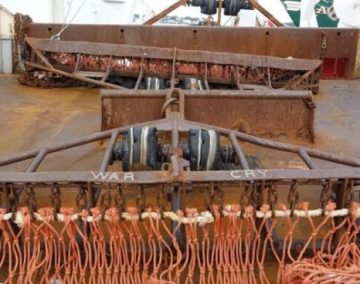 Effective at 0001 on July 4, we are closing the Mid-Atlantic Scallop Access Area to the Limited Access General Category (LACG) Individual Fishing Quota (IFQ) scallop fleet. We project that the 2016 LAGC IFQ has reached the Mid-Atlantic Access Area trip limit. The area will remain closed to the LAGC IFQ fleet for the remainder of the 2016 fishing year through February 28, 2017. Vessels that have complied with the observer notification requirements, declared a trip into the Mid-Atlantic Scallop Access Area using the correct Vessel Monitoring System (VMS) code, and crossed the VMS demarcation line before 0001 July 4, 2016, may complete their trip and retain and land scallops caught from the Mid-Atlantic Scallop Access Area. For more details, read the notice (pdf) as filed this afternoon in the Federal Register and the permit holder bulletin (pdf). To review the Atlantic Sea Scallop management areas, check out our story map. 17:23
Effective at 0001 on July 4, we are closing the Mid-Atlantic Scallop Access Area to the Limited Access General Category (LACG) Individual Fishing Quota (IFQ) scallop fleet. We project that the 2016 LAGC IFQ has reached the Mid-Atlantic Access Area trip limit. The area will remain closed to the LAGC IFQ fleet for the remainder of the 2016 fishing year through February 28, 2017. Vessels that have complied with the observer notification requirements, declared a trip into the Mid-Atlantic Scallop Access Area using the correct Vessel Monitoring System (VMS) code, and crossed the VMS demarcation line before 0001 July 4, 2016, may complete their trip and retain and land scallops caught from the Mid-Atlantic Scallop Access Area. For more details, read the notice (pdf) as filed this afternoon in the Federal Register and the permit holder bulletin (pdf). To review the Atlantic Sea Scallop management areas, check out our story map. 17:23Ministers divided over panel recommendation for northern shrimp fishery
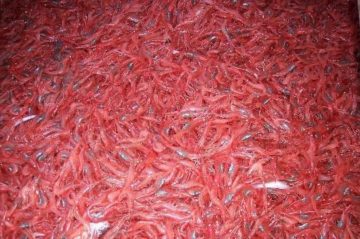 Nova Scotia Fisheries Minister Keith Colwell said he’s disappointed with the recommendation and is drafting a letter for federal Fisheries Minister Dominic LeBlanc to reiterate his views. Newfoundland and Labrador Fisheries Minister Steve Crocker said the current policy is unfair.A federal panel decision that recommends scrapping a northern shrimp policy that protects the pioneers of the multi-million dollar industry is dividing fisheries ministers in two Atlantic provinces. Under the current Last-In, First-Out policy, the last entrants to a fishery off Newfoundland and Labrador are the first to leave when a quota is cut. But the report released this week from an independent panel reviewing the policy said it does not allow the industry to adjust to changes in shrimp stocks, which have been in decline. The report recommends replacing the policy with an allocation regime that would include proportional shares in fishing areas. Read the rest here 17:02
Nova Scotia Fisheries Minister Keith Colwell said he’s disappointed with the recommendation and is drafting a letter for federal Fisheries Minister Dominic LeBlanc to reiterate his views. Newfoundland and Labrador Fisheries Minister Steve Crocker said the current policy is unfair.A federal panel decision that recommends scrapping a northern shrimp policy that protects the pioneers of the multi-million dollar industry is dividing fisheries ministers in two Atlantic provinces. Under the current Last-In, First-Out policy, the last entrants to a fishery off Newfoundland and Labrador are the first to leave when a quota is cut. But the report released this week from an independent panel reviewing the policy said it does not allow the industry to adjust to changes in shrimp stocks, which have been in decline. The report recommends replacing the policy with an allocation regime that would include proportional shares in fishing areas. Read the rest here 17:02
Following his exit from the IPHC, Kauffman calls violation ‘honest mistake’
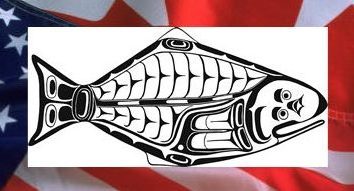 An executive from a Community Development Quota group blamed a regulatory mix-up for the fishing violation that forced him to resign from the international commission regulating halibut harvests. The National Oceanic and Atmospheric Administration Office of Law Enforcement charged Jeff Kauffman and two other men in March with possessing more than 10,000 pounds of halibut over their combined quota limits for a violation that occurred in June 2012. Kauffman is the vice president of the Central Bering Sea Fisherman’s Association, the Community Development Quota group for the island of St. Paul. He resigned on June 22. The joint U.S.-Canadian body has governed halibut quotas and regulations by international treaty since 1923, and has three commissioners each from the U.S. and Canada. Kauffman chalked the violation up to a regulatory mix-up. The violation occurred around June 5, 2012, while Kauffman fished for halibut around St. Paul with Mike Baldwin and Wade Henley, the captain of the F/V Saint Peter. CBSFA owns 100 percent of the vessel. Read the story here 14:49
An executive from a Community Development Quota group blamed a regulatory mix-up for the fishing violation that forced him to resign from the international commission regulating halibut harvests. The National Oceanic and Atmospheric Administration Office of Law Enforcement charged Jeff Kauffman and two other men in March with possessing more than 10,000 pounds of halibut over their combined quota limits for a violation that occurred in June 2012. Kauffman is the vice president of the Central Bering Sea Fisherman’s Association, the Community Development Quota group for the island of St. Paul. He resigned on June 22. The joint U.S.-Canadian body has governed halibut quotas and regulations by international treaty since 1923, and has three commissioners each from the U.S. and Canada. Kauffman chalked the violation up to a regulatory mix-up. The violation occurred around June 5, 2012, while Kauffman fished for halibut around St. Paul with Mike Baldwin and Wade Henley, the captain of the F/V Saint Peter. CBSFA owns 100 percent of the vessel. Read the story here 14:49
On this Day: June 30 – 1911: Coastal Steamer Nacoochee Runs Down Fishing Schooner Off Cape Cod.
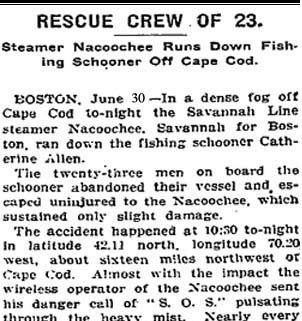 On this day in 1911 one of the many coastal steamers of the era sank a large fishing schooner 16 miles northwest of Provincetown. Since the canal was not completed yet, all ships had to sail a round the outer shore of Cape Cod, and the area was also rife with commercial fishing boats. The headline in the newspapers the next day blared: RESCUE CREW OF 23.; Steamer Nacoochee Runs Down Fishing Schooner Off Cape Cod. BOSTON, June 30. — In a dense fog off Cape Cod to-night the Savannah Line steamer Nacoochee, Savannah for Boston ran down the fishing schooner Catherine Allen… (Read the rest on the right.) Read the rest here 14:20
On this day in 1911 one of the many coastal steamers of the era sank a large fishing schooner 16 miles northwest of Provincetown. Since the canal was not completed yet, all ships had to sail a round the outer shore of Cape Cod, and the area was also rife with commercial fishing boats. The headline in the newspapers the next day blared: RESCUE CREW OF 23.; Steamer Nacoochee Runs Down Fishing Schooner Off Cape Cod. BOSTON, June 30. — In a dense fog off Cape Cod to-night the Savannah Line steamer Nacoochee, Savannah for Boston ran down the fishing schooner Catherine Allen… (Read the rest on the right.) Read the rest here 14:20
Global population’s of squid, octopuses and cuttlefish are booming
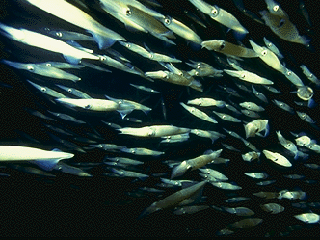 The world’s squid, octopuses and cuttlefish have been going through a massive, 60-year population boom, a new study has found. Published yesterday in Current Biology, the study shows a continued rise in population numbers of cephalopods since the 1950s. It also reveals the boom has happened in 35 species of cephalopods – covering six families – around the globe. Earlier research has found cephalopods, which are highly adaptable to changing environments, may be benefiting from a combination of climatic changes, including global temperature rises. University of Adelaide researcher Dr Zoe Doubleday led the study and found that despite anecdotal reports indicating a “boom and bust” cycle in cephalopod populations, since 1953 there had been a sustained increase. Link to the study here 11:51
The world’s squid, octopuses and cuttlefish have been going through a massive, 60-year population boom, a new study has found. Published yesterday in Current Biology, the study shows a continued rise in population numbers of cephalopods since the 1950s. It also reveals the boom has happened in 35 species of cephalopods – covering six families – around the globe. Earlier research has found cephalopods, which are highly adaptable to changing environments, may be benefiting from a combination of climatic changes, including global temperature rises. University of Adelaide researcher Dr Zoe Doubleday led the study and found that despite anecdotal reports indicating a “boom and bust” cycle in cephalopod populations, since 1953 there had been a sustained increase. Link to the study here 11:51
Getting Hooked! Fishermen can prepare for hooking injuries
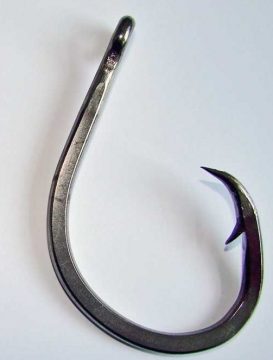 Many fishermen are familiar with the feeling of getting a fishhook stuck in their hand, arm or elsewhere. Usually, it’s a quick fix if the fisherman can jump in a car and head to an emergency room or to a clinic. However, if they are out in a boat on Cook Inlet or nine miles out on a remote river, (or out in the ocean) professional medical help may not be so immediately available. Being up to date on tetanus shots is a good preventative measure, said Dr. Rod Hall, a physician at Health North Family Medicine. Based on the kind of injury, the person will need a tetanus booster in the future — if it’s a clean cut, 10 years is fine, but if it’s not, five years is better, he said. Tetanus shots are available, but there is no antitoxin and the disease can be deadly. If fishermen want to take it out themselves, they should push the hook through the skin and flatten the barb against the hook with pliers before withdrawing it back the way it came out. Read the rest here 11:12
Many fishermen are familiar with the feeling of getting a fishhook stuck in their hand, arm or elsewhere. Usually, it’s a quick fix if the fisherman can jump in a car and head to an emergency room or to a clinic. However, if they are out in a boat on Cook Inlet or nine miles out on a remote river, (or out in the ocean) professional medical help may not be so immediately available. Being up to date on tetanus shots is a good preventative measure, said Dr. Rod Hall, a physician at Health North Family Medicine. Based on the kind of injury, the person will need a tetanus booster in the future — if it’s a clean cut, 10 years is fine, but if it’s not, five years is better, he said. Tetanus shots are available, but there is no antitoxin and the disease can be deadly. If fishermen want to take it out themselves, they should push the hook through the skin and flatten the barb against the hook with pliers before withdrawing it back the way it came out. Read the rest here 11:12
Last In First Out – Shrimp quota change may be ‘disastrous’ for Nova Scotia fishery
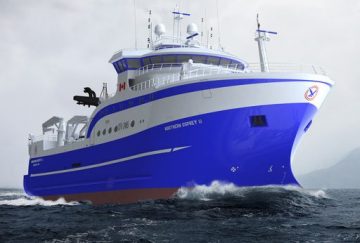 A massive decline in northern shrimp stocks off the northeastern coast of Newfoundland could cost Nova Scotia fish companies millions. That has one Nova Scotia fishermen worried about his own commitment to buy a $60-million factory freezer trawler that could fish year-round. “Changing the ground rules at this point in time could have a disastrous impact upon us,” said Liverpool’s Ulf Snarby. With partners in New Brunswick and Labrador, he has been fishing northern shrimp off the northeastern coast of Newfoundland, called Area 6, since 1977. Fishable shrimp stocks declined by 41 per cent in Area 6 from 2014 to 2015, the Department of Fisheries and Oceans reported in January. With that dramatic decline in the stock, many in the industry expect quotas to be reduced. That’s caused a fight to brew between fishermen in Newfoundland and those in Nova Scotia over who can fish what’s left. Read the rest here – The new $60 million factory freezer trawler Click here 10:34
A massive decline in northern shrimp stocks off the northeastern coast of Newfoundland could cost Nova Scotia fish companies millions. That has one Nova Scotia fishermen worried about his own commitment to buy a $60-million factory freezer trawler that could fish year-round. “Changing the ground rules at this point in time could have a disastrous impact upon us,” said Liverpool’s Ulf Snarby. With partners in New Brunswick and Labrador, he has been fishing northern shrimp off the northeastern coast of Newfoundland, called Area 6, since 1977. Fishable shrimp stocks declined by 41 per cent in Area 6 from 2014 to 2015, the Department of Fisheries and Oceans reported in January. With that dramatic decline in the stock, many in the industry expect quotas to be reduced. That’s caused a fight to brew between fishermen in Newfoundland and those in Nova Scotia over who can fish what’s left. Read the rest here – The new $60 million factory freezer trawler Click here 10:34
South Pacific Tuna Treaty renegotiation session concluded successfully
 The most recent South Pacific Tuna Treaty renegotiation session concluded successfully on Saturday, June 25, 2016. Negotiators from the United States and representatives of the 16 Pacific Island parties reached agreement in principle on changes to the 27-year-old Tuna Treaty and the terms of fishing access for the U.S. purse seine fleet to Pacific Island waters through 2022. The proposed agreement would establish more flexible procedures for commercial cooperation between U.S. industry and Pacific Island parties. The outcome reflects strong cooperation between the parties to the Treaty and relevant stakeholders, and a mutual commitment to the broader positive relationship between the United States and the Pacific Island region. Read the rest here 09:46
The most recent South Pacific Tuna Treaty renegotiation session concluded successfully on Saturday, June 25, 2016. Negotiators from the United States and representatives of the 16 Pacific Island parties reached agreement in principle on changes to the 27-year-old Tuna Treaty and the terms of fishing access for the U.S. purse seine fleet to Pacific Island waters through 2022. The proposed agreement would establish more flexible procedures for commercial cooperation between U.S. industry and Pacific Island parties. The outcome reflects strong cooperation between the parties to the Treaty and relevant stakeholders, and a mutual commitment to the broader positive relationship between the United States and the Pacific Island region. Read the rest here 09:46
Southeast Alaska Dungeness crabbers see full-length summer, fall seasons
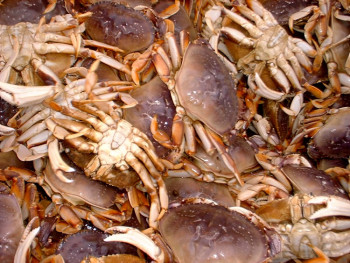 Commercial Dungeness crabbers have a full two-month summer and two-month fall season for most of Southeast Alaska again this year. The Alaska Department of Fish and Game announced this week the summer season would continue through August 15 and a fall season is planned for October and November. The season length is set based on the catch from the first week of fishing. Crabbing opened on June 15th. Adam Messmer, the department’s shellfish assistant manager for Southeast, says the total season catch is projected to wind up at 2.89 million pounds and the quality of the catch has started off well. “There’s a lot of people saying that there was really hard crab, full crab, not a lot of soft shell around, which is kindof an odd thing for this time of year, usually there’s at least a reasonable percentage of soft shell but it sounds like a lot of good, really high quality crab,” Messmer said. Read the rest here 09:31
Commercial Dungeness crabbers have a full two-month summer and two-month fall season for most of Southeast Alaska again this year. The Alaska Department of Fish and Game announced this week the summer season would continue through August 15 and a fall season is planned for October and November. The season length is set based on the catch from the first week of fishing. Crabbing opened on June 15th. Adam Messmer, the department’s shellfish assistant manager for Southeast, says the total season catch is projected to wind up at 2.89 million pounds and the quality of the catch has started off well. “There’s a lot of people saying that there was really hard crab, full crab, not a lot of soft shell around, which is kindof an odd thing for this time of year, usually there’s at least a reasonable percentage of soft shell but it sounds like a lot of good, really high quality crab,” Messmer said. Read the rest here 09:31
Post-Brexit, north Queensland fishermen consider trade opportunities with the United Kingdom
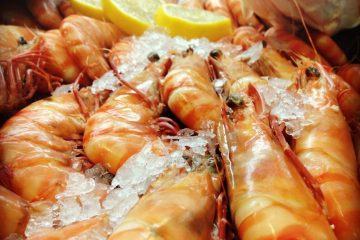 North Queensland fishermen are hoping that now the United Kingdom is to exit the European Union (EU) following the referendum last week, export markets could be re-vitalized. Many stopped exporting to the EU due to difficult protocols and high costs associated with their membership. That was exactly what Mackay Commercial fisherman David Caracciolo did, but he said he may now reconsider that decision if the UK does leave the EU. He believes with the UK split away, it would be much easier to build trade relations. “Previously, the testing regime has been very strict,” Mr Caracciolo said. “We have had lots of incidents in the past where stock, mainly prawns, have been tested in Australian [and] got into the EU and been rejected. “In saying that, the UK — to my knowledge — has not been a big market of Australian seafood but maybe things could change in the future. Read the rest here 08:56
North Queensland fishermen are hoping that now the United Kingdom is to exit the European Union (EU) following the referendum last week, export markets could be re-vitalized. Many stopped exporting to the EU due to difficult protocols and high costs associated with their membership. That was exactly what Mackay Commercial fisherman David Caracciolo did, but he said he may now reconsider that decision if the UK does leave the EU. He believes with the UK split away, it would be much easier to build trade relations. “Previously, the testing regime has been very strict,” Mr Caracciolo said. “We have had lots of incidents in the past where stock, mainly prawns, have been tested in Australian [and] got into the EU and been rejected. “In saying that, the UK — to my knowledge — has not been a big market of Australian seafood but maybe things could change in the future. Read the rest here 08:56
New Bedford to unveil Fishermen’s Tribute Monument at 6 p.m. June 30 in Tonneson Park
 New Bedford will celebrate the installation of the Fishermen’s Tribute Monument at 6 p.m. June 30 located in Tonneson Park on the New Bedford waterfront. The installation of the bronze statute will serve as a public tribute to the generations of commercial fishermen and their families. The Fishermen’s Tribute Fund Committee, lead by chairperson Deb Shrader, fundraised for more than 10 years to make the monument a reality. The Fishermen’s Tribute Monument is a bronze statue that depicts the scene of a fishing family; a mother stands near her fisherman husband, who is down on one knee, his daughter in his lap hugging him, his hand on the shoulder of his son who holds a crew cap. The sculpture is the work of New Bedford artist Erik Durant. The passing of the cap to the son signifies the continuation of the fishing tradition, while the clinging daughter expresses the regret of separation that her mother must hold in. The woman is located in the back of the scene, standing tall, representing the wives and mothers who stay behind to hold their families together while fishermen are at sea. Link 21:38
New Bedford will celebrate the installation of the Fishermen’s Tribute Monument at 6 p.m. June 30 located in Tonneson Park on the New Bedford waterfront. The installation of the bronze statute will serve as a public tribute to the generations of commercial fishermen and their families. The Fishermen’s Tribute Fund Committee, lead by chairperson Deb Shrader, fundraised for more than 10 years to make the monument a reality. The Fishermen’s Tribute Monument is a bronze statue that depicts the scene of a fishing family; a mother stands near her fisherman husband, who is down on one knee, his daughter in his lap hugging him, his hand on the shoulder of his son who holds a crew cap. The sculpture is the work of New Bedford artist Erik Durant. The passing of the cap to the son signifies the continuation of the fishing tradition, while the clinging daughter expresses the regret of separation that her mother must hold in. The woman is located in the back of the scene, standing tall, representing the wives and mothers who stay behind to hold their families together while fishermen are at sea. Link 21:38
Vessel rescues 19 fishermen from burning boat off Bermuda
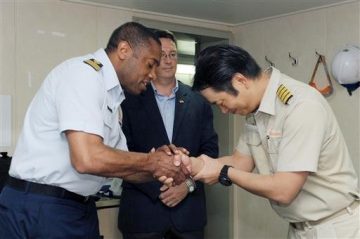 A plume of black smoke alerted the crew of a cargo vessel to possible distress. As they pulled closer in the Atlantic Ocean, they found a fishing boat engulfed in flames and the sailors in the water. The ship, K. Coral, hoisted 17 fishermen aboard. Two others drifted away while clinging to a makeshift raft made from fishing buoys. Lookouts searched for several hours, through nightfall and heavy wind and rain, before the crew pulled them both to safety as well. The ship arrived this week to unload steel in New Haven, Connecticut, where a delegation from the U.S. Coast Guard on Monday honored the captain and crew for carrying out the rescue last week 900 miles southeast of Bermuda. Park Hyog Soo, the South Korean captain of the Panama-flagged K. Coral, said in Wednesday an email to The Associated Press that the entire effort felt like something out of a movie. “Until now I, and my crew, still can’t believe that we had rescued 19 people,” he said. Read the story here 21:12
A plume of black smoke alerted the crew of a cargo vessel to possible distress. As they pulled closer in the Atlantic Ocean, they found a fishing boat engulfed in flames and the sailors in the water. The ship, K. Coral, hoisted 17 fishermen aboard. Two others drifted away while clinging to a makeshift raft made from fishing buoys. Lookouts searched for several hours, through nightfall and heavy wind and rain, before the crew pulled them both to safety as well. The ship arrived this week to unload steel in New Haven, Connecticut, where a delegation from the U.S. Coast Guard on Monday honored the captain and crew for carrying out the rescue last week 900 miles southeast of Bermuda. Park Hyog Soo, the South Korean captain of the Panama-flagged K. Coral, said in Wednesday an email to The Associated Press that the entire effort felt like something out of a movie. “Until now I, and my crew, still can’t believe that we had rescued 19 people,” he said. Read the story here 21:12
$10M spent by N.B. government to expunge crab fishermen’s loans
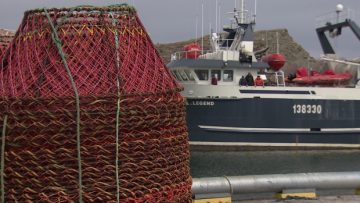 Documents obtained by Radio-Canada reveal that from 2000 to 2008, the New Brunswick government spent $10 million to erase the debts of 15 crab fishermen, amassed in the 1980s and 1990s as part of a lending program through the department of Agriculture, Aquaculture, and Fisheries. The total amount forgiven was $10,769,225. Seventeen crab fishermen received $15 million in public funds in the form of loans and loan guarantees for the construction of fishing boats. Fifteen weren’t able to repay their loans. Several fishermen sold their boats, and three boats were seized by the province. Only one fisherman was able to honour this loan guarantee, valued at $500,000. One of the 17 loans, granted in 1984, is still outstanding. The original amount loaned by the New Brunswick government was $687,323 and has since climbed to $880,569 with interest. Read the rest here 20:47
Documents obtained by Radio-Canada reveal that from 2000 to 2008, the New Brunswick government spent $10 million to erase the debts of 15 crab fishermen, amassed in the 1980s and 1990s as part of a lending program through the department of Agriculture, Aquaculture, and Fisheries. The total amount forgiven was $10,769,225. Seventeen crab fishermen received $15 million in public funds in the form of loans and loan guarantees for the construction of fishing boats. Fifteen weren’t able to repay their loans. Several fishermen sold their boats, and three boats were seized by the province. Only one fisherman was able to honour this loan guarantee, valued at $500,000. One of the 17 loans, granted in 1984, is still outstanding. The original amount loaned by the New Brunswick government was $687,323 and has since climbed to $880,569 with interest. Read the rest here 20:47
Fishery closures suggested to save West Coast killer whales
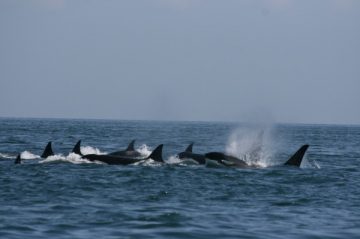 Strategic fishery closures and marine habitat protection are part of a proposed plan by the federal government to protect the threatened killer whales off Canada’s West Coast. The recovery plan for the Northern and Southern Resident Killer Whale population has been set out online by the Department of Fisheries and Oceans with a 60-day public comment period. The document makes 94 recommendations to help the two distinct whale populations that eat only fish. The Northern Residents are listed as threatened in Canada, while the United States has declared its Southern Resident population endangered. A team of experts from the federal Fisheries Department, Parks Canada, the Vancouver Aquarium and the National Oceanographic and Atmospheric Administration in the United States developed the plan between 2011 and 2014. Read the rest here 20:05
Strategic fishery closures and marine habitat protection are part of a proposed plan by the federal government to protect the threatened killer whales off Canada’s West Coast. The recovery plan for the Northern and Southern Resident Killer Whale population has been set out online by the Department of Fisheries and Oceans with a 60-day public comment period. The document makes 94 recommendations to help the two distinct whale populations that eat only fish. The Northern Residents are listed as threatened in Canada, while the United States has declared its Southern Resident population endangered. A team of experts from the federal Fisheries Department, Parks Canada, the Vancouver Aquarium and the National Oceanographic and Atmospheric Administration in the United States developed the plan between 2011 and 2014. Read the rest here 20:05
Misuse of the precautionary approach in fisheries management – A Conversation with Carl Walters
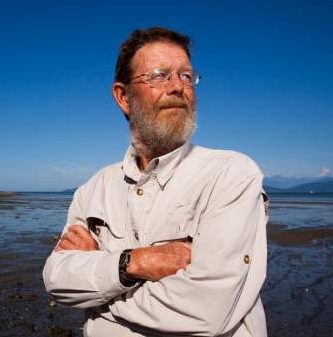 We spoke with Carl Walters of the University of British Columbia about the misuse of the precautionary approach by risk-averse scientists and conservation advocates. His concern arises from the application of the precautionary approach to Western Canadian salmon fisheries, which he believes has negatively impacted Canadian salmon fishermen and resulted in “virtually, an economic collapse.” He began by first differentiating between the precautionary principle and the precautionary approach, the former he claimed to be “a perfectly sensible statement that I think almost everyone would subscribe to about the need to avoid irreversible harm when possible…in the management of any system. There’s a different creature that has arisen in fisheries policy…called the precautionary approach to management” – this is the one that upsets him (00:35). Read the rest here Click here to listen 16:18
We spoke with Carl Walters of the University of British Columbia about the misuse of the precautionary approach by risk-averse scientists and conservation advocates. His concern arises from the application of the precautionary approach to Western Canadian salmon fisheries, which he believes has negatively impacted Canadian salmon fishermen and resulted in “virtually, an economic collapse.” He began by first differentiating between the precautionary principle and the precautionary approach, the former he claimed to be “a perfectly sensible statement that I think almost everyone would subscribe to about the need to avoid irreversible harm when possible…in the management of any system. There’s a different creature that has arisen in fisheries policy…called the precautionary approach to management” – this is the one that upsets him (00:35). Read the rest here Click here to listen 16:18

Magnuson management – how well is it working?
“Through investment and sacrifice on the part of our commercial and recreational fishermen, today, landings by U.S. commercial fishermen—and the value they get for those landings—are near all-time highs” The Governance of Fish: Forty Years under the Magnuson-Stevens Act, 04/11/2016, Sam Rauch (Deputy Assistant Administrator for Regulatory Programs, NOAA Fisheries) Periodically I like to do an overview of U.S. fisheries to give readers the opportunity to evaluate how their fisheries are doing relative to other domestic fisheries. This seems particularly relevant today, particularly considering Sam Rauch’s “happy birthday to us” anniversary statement up above. Nils Stolpe, FishNet USA Click here to read, and review the charts and graphs. 14:02
Last two public hearings for Northeast Regional Ocean Plan – tonight in R.I., tomorrow night in Maine
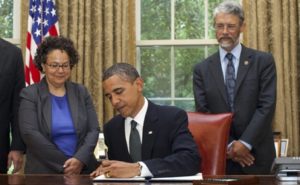 A plan to improve (?) management facets of the ocean and coasts of the northeastern U.S. states is headed for its final public hearings in Rhode Island and Maine. The second-to-last hearing about the Northeast Regional Ocean Plan is scheduled for Wednesday night at the Coastal Institute of the University of Rhode Island in Narragansett, Rhode Island. The last one is Thursday night at Glickman Library of the University of Southern Maine in Portland, Maine. The ocean plan is an outgrowth of the National Ocean Policy established by presidential executive order in 2010. It deals with many aspects of ocean planning, including marine life and habitat, commercial and recreational fishing and discusses national security. Website for the Northeast Regional Planning Body click here 13:11
A plan to improve (?) management facets of the ocean and coasts of the northeastern U.S. states is headed for its final public hearings in Rhode Island and Maine. The second-to-last hearing about the Northeast Regional Ocean Plan is scheduled for Wednesday night at the Coastal Institute of the University of Rhode Island in Narragansett, Rhode Island. The last one is Thursday night at Glickman Library of the University of Southern Maine in Portland, Maine. The ocean plan is an outgrowth of the National Ocean Policy established by presidential executive order in 2010. It deals with many aspects of ocean planning, including marine life and habitat, commercial and recreational fishing and discusses national security. Website for the Northeast Regional Planning Body click here 13:11
Athearn Marine Agency Boat of the Week: 36.3′ Wood Lobster,6 Cylinder John Deere 6076 Diesel
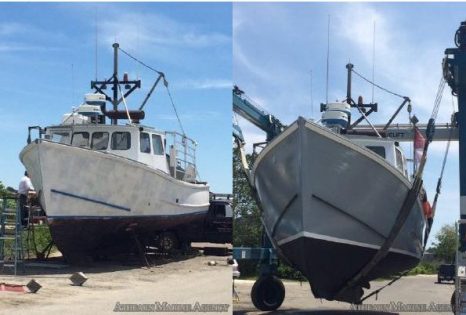 Specifications, information and 10 photos click here To see all the boats in this series, Click here 12:38
Specifications, information and 10 photos click here To see all the boats in this series, Click here 12:38
MSC puts P.E.I. Lobster fishery on notice, use less mackerel as bait, or risk eco-friendly stamp
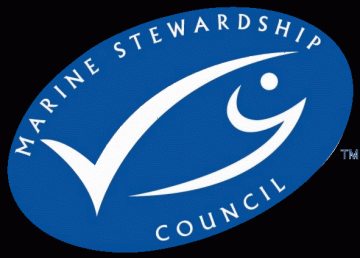 P.E.I. lobster fishermen will have to prove they’re using less mackerel for bait if they’re going to keep their eco-friendly certification. The Island lobster fishery achieved Marine Stewardship Council certification in November 2014. Yearly audits are done to make sure the fishery continues to be ecologically sustainable, while the council encourages consumers to purchase sustainably-caught fish with special branding — a little blue logo incorporating a check mark and a fish. To keep that certification, MSC auditors have asked the fishery to meet five conditions — two of which involve reducing the use of mackerel for bait. Read the rest here 12:06
P.E.I. lobster fishermen will have to prove they’re using less mackerel for bait if they’re going to keep their eco-friendly certification. The Island lobster fishery achieved Marine Stewardship Council certification in November 2014. Yearly audits are done to make sure the fishery continues to be ecologically sustainable, while the council encourages consumers to purchase sustainably-caught fish with special branding — a little blue logo incorporating a check mark and a fish. To keep that certification, MSC auditors have asked the fishery to meet five conditions — two of which involve reducing the use of mackerel for bait. Read the rest here 12:06
Opinion: A remedy for overregulation – Each government agency should answer to a board of directors
 If the 2016 presidential election has proved anything so far, it’s that millions of Americans know something is seriously wrong in Washington and they want it fixed. They’re right. The fact is that needless regulations, gross mismanagement and outright fraud have crippled our economy, stifled businesses and choked off job creation. The federal government collects $3.5 trillion in taxes and then forces us to pay another $2 trillion in regulation costs — and then another $1 trillion in waste and fraud. The gross domestic product has only averaged 1.7 percent annual growth over the last 15 years compared to 3.5 percent over the previous 50 years. That’s why the middle class has not had a raise in 15 years. Read the rest here 10:46
If the 2016 presidential election has proved anything so far, it’s that millions of Americans know something is seriously wrong in Washington and they want it fixed. They’re right. The fact is that needless regulations, gross mismanagement and outright fraud have crippled our economy, stifled businesses and choked off job creation. The federal government collects $3.5 trillion in taxes and then forces us to pay another $2 trillion in regulation costs — and then another $1 trillion in waste and fraud. The gross domestic product has only averaged 1.7 percent annual growth over the last 15 years compared to 3.5 percent over the previous 50 years. That’s why the middle class has not had a raise in 15 years. Read the rest here 10:46
Commercial fishermen hit back at machine gun claims of Labor candidate for Wide Bay Lucy Stanton
 Queensland Seafood Industry Association responds – It probably comes as no surprise to most that you (Lucy Stanton) are pinpointing your focus on net fishing operations in the federal electorate of Wide Bay that you are running for in Saturday’s election. It would seem that you are trying to appeal to voters on the back of the “net free zones” brought in by the Queensland State Labor Government last year. Like the State Labor policy, there is no scientific basis for any of your claims that ocean beach netters cause any harm to the environment. You may be interested in knowing that there are strict regulations set in place for ocean beach netters to legally and sustainably net fish on the North Shore beaches. Their main target over the winter months is mullet, which recreational fishers do not typically catch. It is a specifically targeted fish with limited bi-catch and proven to be sustainable. Your claims in the article are disappointing to say the least. It appears clear that you are trying to create hysteria in the hope of getting “airplay” for your own benefit in your election campaign. Read the response here 09:21
Queensland Seafood Industry Association responds – It probably comes as no surprise to most that you (Lucy Stanton) are pinpointing your focus on net fishing operations in the federal electorate of Wide Bay that you are running for in Saturday’s election. It would seem that you are trying to appeal to voters on the back of the “net free zones” brought in by the Queensland State Labor Government last year. Like the State Labor policy, there is no scientific basis for any of your claims that ocean beach netters cause any harm to the environment. You may be interested in knowing that there are strict regulations set in place for ocean beach netters to legally and sustainably net fish on the North Shore beaches. Their main target over the winter months is mullet, which recreational fishers do not typically catch. It is a specifically targeted fish with limited bi-catch and proven to be sustainable. Your claims in the article are disappointing to say the least. It appears clear that you are trying to create hysteria in the hope of getting “airplay” for your own benefit in your election campaign. Read the response here 09:21
A LIFO Win for the Inshore Fleet! Maybe. Who wins when they redistribute the quota is the next question.
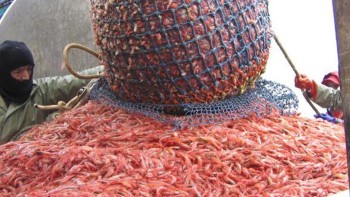 The Ministerial Advisory Panel conducting an external review of the Last-In, First-Out policy (LIFO) released its recommendations yesterday. The Panel recommended abolishing LIFO and implementing permanent proportional sharing.The recommendation went on to advise LIFO be replaced with a proportional sharing approach. There, each quota holder receives a fixed percentage of the resource. For that, the panel has also advised the area fished by the inshore fleet, Shrimp Fishing Area 6 (SFA 6), use 1997 to 2009 as a reference period in establishing the new percentages, given the changes to quota shares forced by LIFO then to now. Shares should be based on total accumulated allocations over that period, for those still around in 2009, the report states. This will reveal the real winners. Two articles, click here, and click here Read the Report of the Ministerial Advisory Panel click here 7.1 lists the “options” Read the Press Release from FFAW-Unifor click here 08:03
The Ministerial Advisory Panel conducting an external review of the Last-In, First-Out policy (LIFO) released its recommendations yesterday. The Panel recommended abolishing LIFO and implementing permanent proportional sharing.The recommendation went on to advise LIFO be replaced with a proportional sharing approach. There, each quota holder receives a fixed percentage of the resource. For that, the panel has also advised the area fished by the inshore fleet, Shrimp Fishing Area 6 (SFA 6), use 1997 to 2009 as a reference period in establishing the new percentages, given the changes to quota shares forced by LIFO then to now. Shares should be based on total accumulated allocations over that period, for those still around in 2009, the report states. This will reveal the real winners. Two articles, click here, and click here Read the Report of the Ministerial Advisory Panel click here 7.1 lists the “options” Read the Press Release from FFAW-Unifor click here 08:03
Nation’s first regional ocean plan discussed in Portsmouth
State and federal officials joined members of the public in a roundtable conversation Monday night to discuss a draft of the nation’s first regional ocean plan. The Northeast Ocean Plan is significant because there are numerous federal agencies with jurisdiction over the Atlantic Ocean, and prior to its development, there had never been a good way for them to communicate with each other and those who live and work on the water, according to Portsmouth native John Williamson, a former commercial fisherman. Today, Williamson lives in Kennebunk, Maine, and works in ocean management. Members of the public who were at the meeting had concerns that the plan is redundant, and that federal agencies will not take their comments and opinions into account before the final document is published. Read the rest here 18:35
Bay of Fundy Fishermen in need to pay more attention to the Energy East Pipeline project
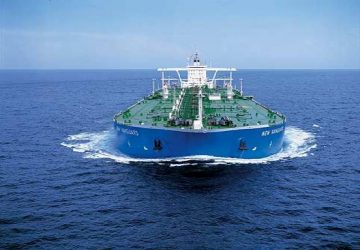 Former MP Coline Campbell says people in Nova Scotia need to pay more attention to the Energy East Pipeline project and the risk it poses for the Bay of Fundy and communities all along it. “I’m not against the pipeline but I think there are better places for it go than having all that tanker traffic on the Bay of Fundy,” says Campbell, who was MP for West Nova from 1980 to 1984. “The Bay of Fundy is only 32 miles wide. In my day, every fisheries group in the province would have been at me about this but I’m not hearing anyone talking about it.” The proposed pipeline would bring crude oil from Alberta to the Irving oil refinery in Saint John, N.B. Read the rest here 17:31
Former MP Coline Campbell says people in Nova Scotia need to pay more attention to the Energy East Pipeline project and the risk it poses for the Bay of Fundy and communities all along it. “I’m not against the pipeline but I think there are better places for it go than having all that tanker traffic on the Bay of Fundy,” says Campbell, who was MP for West Nova from 1980 to 1984. “The Bay of Fundy is only 32 miles wide. In my day, every fisheries group in the province would have been at me about this but I’m not hearing anyone talking about it.” The proposed pipeline would bring crude oil from Alberta to the Irving oil refinery in Saint John, N.B. Read the rest here 17:31
HUGE CATCH off the coast of Gloucester!
On April 28,2016, F/V CAPT NOVELLO caught a huge American flag 38 ft. by 20 ft.. Looking for ANSWERS , WHO LOST IT ?? WHY/?? AND WHEN ??/ Anyone that has a lead or the answer, feel free to leave a comment below for the Captain! 14:17
Expanding monument will do more harm than good – Shane Yoshimoto, Honolulu
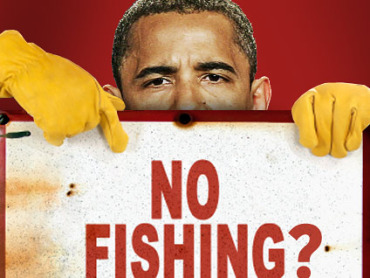 I am writing regarding the proposal to expand the Papahanaumokuakea Marine National Monument and to ban commercial fishing there. I work in Hawaii’s fishing industry, but besides it being my livelihood it’s my love and passion. Fish isn’t just a source of food to me or the people of Hawaii; it’s a huge part of the culture. Hawaii’s fishing industry and economy will be impacted if this monument is expanded. I am strongly opposed to the expansion of this monument. We are already limited on locally sourced foods and this would take a significant amount of fresh fish away from Hawaii. Read the rest here 14:04
I am writing regarding the proposal to expand the Papahanaumokuakea Marine National Monument and to ban commercial fishing there. I work in Hawaii’s fishing industry, but besides it being my livelihood it’s my love and passion. Fish isn’t just a source of food to me or the people of Hawaii; it’s a huge part of the culture. Hawaii’s fishing industry and economy will be impacted if this monument is expanded. I am strongly opposed to the expansion of this monument. We are already limited on locally sourced foods and this would take a significant amount of fresh fish away from Hawaii. Read the rest here 14:04
First MAN D2676 Workboat Engine Ready for Launch
 Last December, MAN Engines introduced its latest generation in-line six-cylinder engines for workboats. Now the first MAN D2676 LE443 engine off the production line will be installed aboard the new salmon fishing boat, LT32 Gilnetter, built by the Mavrik Marine boatyard in Washington State and set to launch in late autumn 2016. The D2676 LE443 is designed for light duty commercial operation and generates an output of 537 kW (730 HP) at 2,300 rpm with a cylinder capacity of 12.4 l. The maximum torque is 2,445 Nm at speeds of 1,300 to 2,100 rpm. Mavrik Marine has already fitted a large number of their PB32 series boats with the engine’s predecessor, the D2876, which offers the same output. The new LT32 boat design has been modified to be able to operate in the even more shallow waters of the Bristol Bay area in Alaska. Read the story here 13:23
Last December, MAN Engines introduced its latest generation in-line six-cylinder engines for workboats. Now the first MAN D2676 LE443 engine off the production line will be installed aboard the new salmon fishing boat, LT32 Gilnetter, built by the Mavrik Marine boatyard in Washington State and set to launch in late autumn 2016. The D2676 LE443 is designed for light duty commercial operation and generates an output of 537 kW (730 HP) at 2,300 rpm with a cylinder capacity of 12.4 l. The maximum torque is 2,445 Nm at speeds of 1,300 to 2,100 rpm. Mavrik Marine has already fitted a large number of their PB32 series boats with the engine’s predecessor, the D2876, which offers the same output. The new LT32 boat design has been modified to be able to operate in the even more shallow waters of the Bristol Bay area in Alaska. Read the story here 13:23






